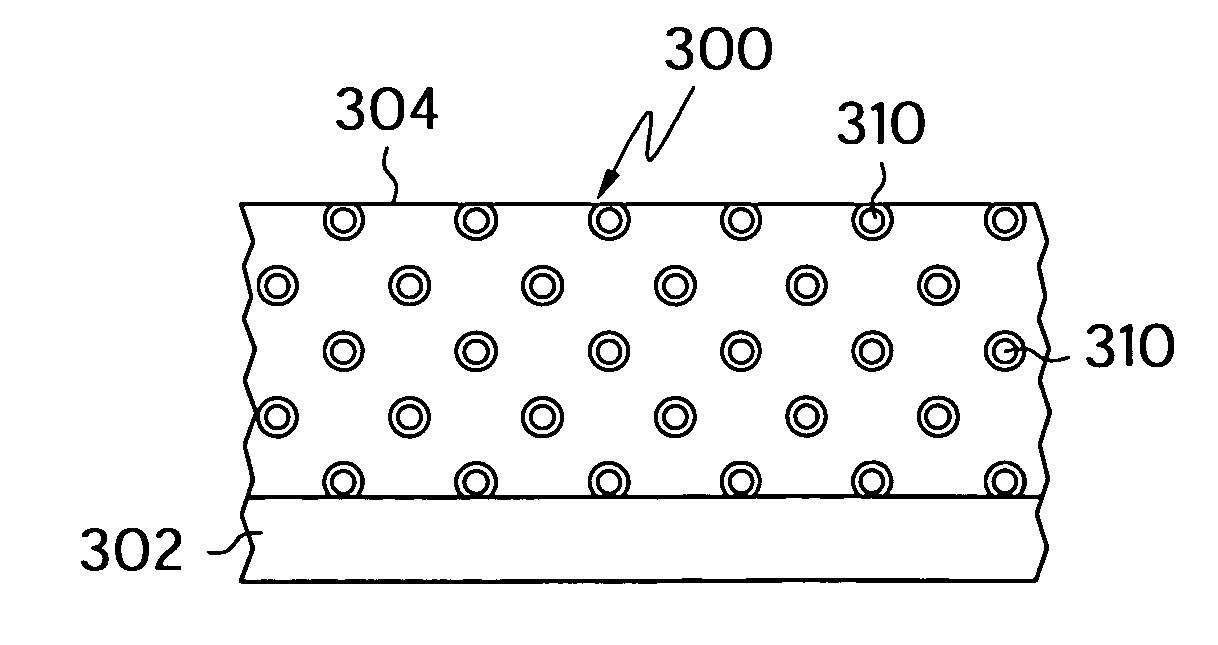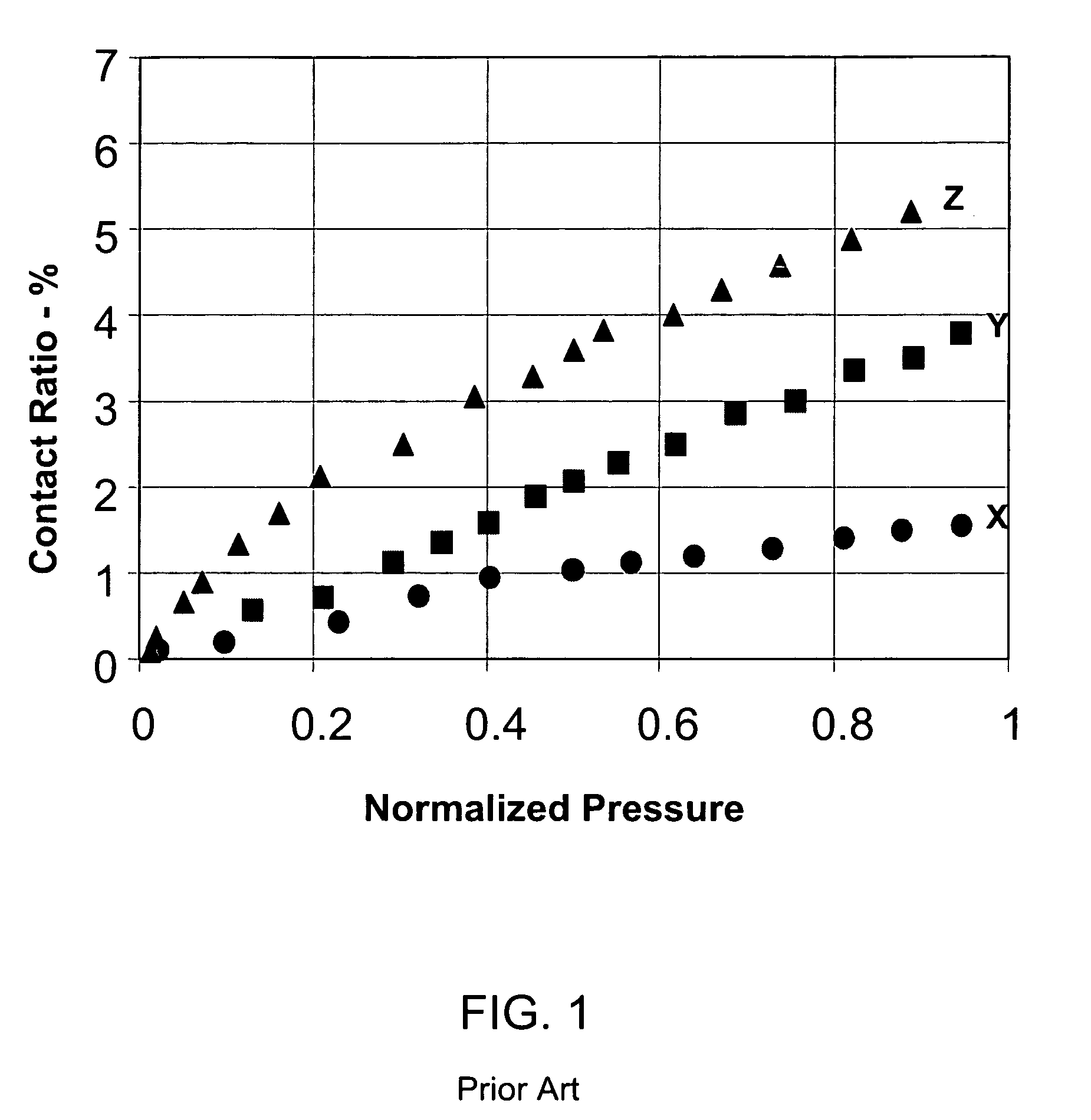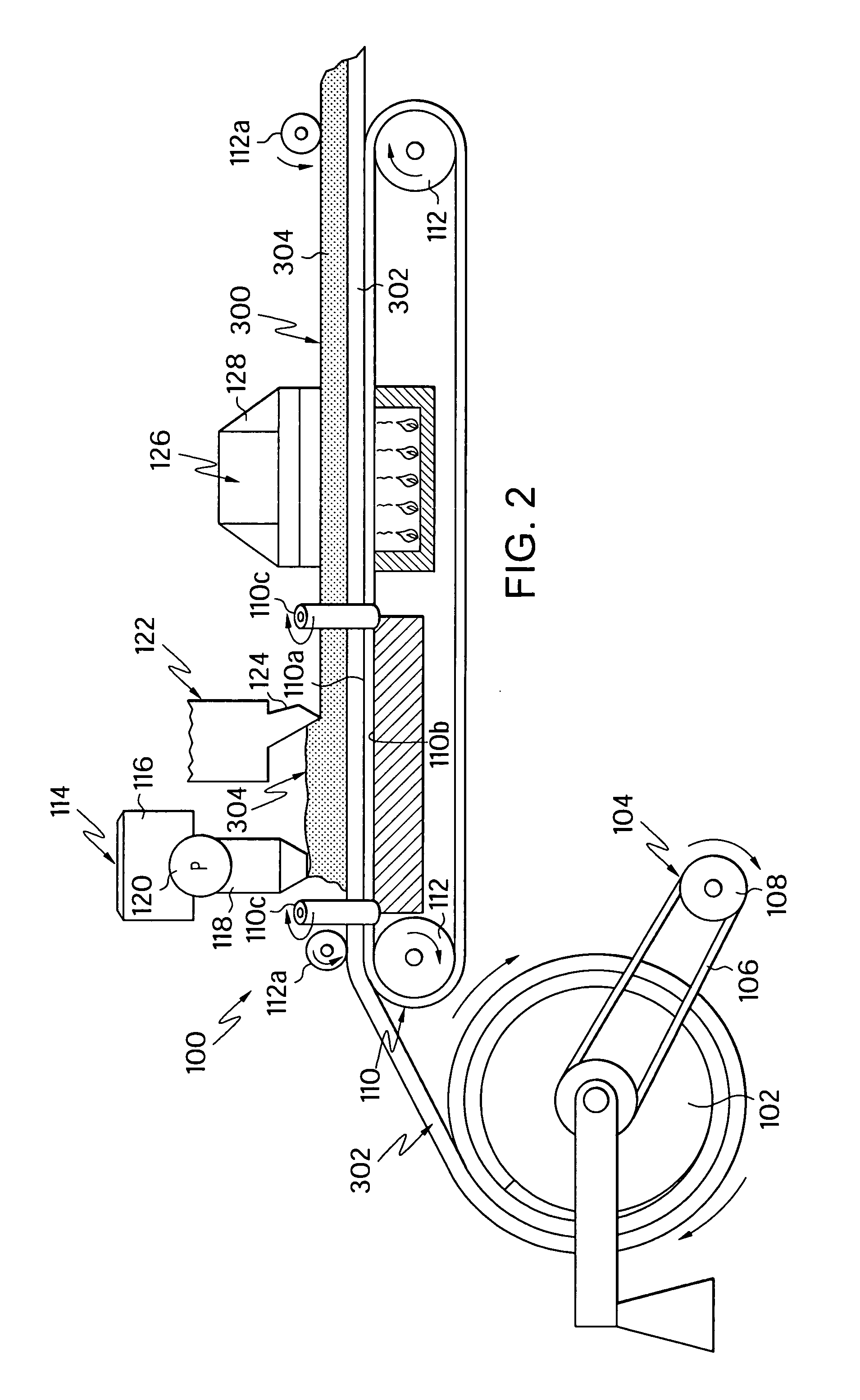Water-based polishing pads having improved contact area
a technology of polishing pads and water-based solutions, which is applied in the field of polishing pads, can solve the problems of cumbersome (organic) solvents that are typically used (e.g., n,n-dimethyl formamide) and cost prohibitive handling, and can have center-to-edge variations in density and porosity within the pads
- Summary
- Abstract
- Description
- Claims
- Application Information
AI Technical Summary
Benefits of technology
Problems solved by technology
Method used
Image
Examples
examples
[0053]The following Table illustrates the improved defectivity of the water-based pad of the present invention. The water-based pad was formed by mixing 75 grams of W-290H from Crompton Corp. with 25 grams of Rhoplex® E-358 from Rohm and Haas Company in a 3 to 1 ratio for 2 minutes in a mix tank. Then, 1 gram of Foamaster® 111 from Cognis was added to the mix tank and mixed for another 2 minutes. Then 0.923 grams of Expancel® 551 DE40d42 (Expancel® 551DE40d42 is a 30-50 μm weight average diameter hollow-polymeric microsphere manufactured by Akzo Nobel) was added to the mix tank and mixed for another 5 minutes. Also, 1 gram of a thickener, Acrysol® ASE-60 and 5 Acrysol I-62, both from Rohm and Haas Company was added to the mix tank and mix for 15 minutes. Then, the mixture was coated (50 mils (1.27 mm) thick wet) on a 453 PET film from Dupont Teijin and dried in a hot air oven at 60° C. for 6 hrs. The resulting polishing pad was 25 mils (0.64 mm) thick. The water-based polishing pad ...
PUM
| Property | Measurement | Unit |
|---|---|---|
| volume percent | aaaaa | aaaaa |
| thick | aaaaa | aaaaa |
| weight average diameter | aaaaa | aaaaa |
Abstract
Description
Claims
Application Information
 Login to View More
Login to View More - R&D
- Intellectual Property
- Life Sciences
- Materials
- Tech Scout
- Unparalleled Data Quality
- Higher Quality Content
- 60% Fewer Hallucinations
Browse by: Latest US Patents, China's latest patents, Technical Efficacy Thesaurus, Application Domain, Technology Topic, Popular Technical Reports.
© 2025 PatSnap. All rights reserved.Legal|Privacy policy|Modern Slavery Act Transparency Statement|Sitemap|About US| Contact US: help@patsnap.com



